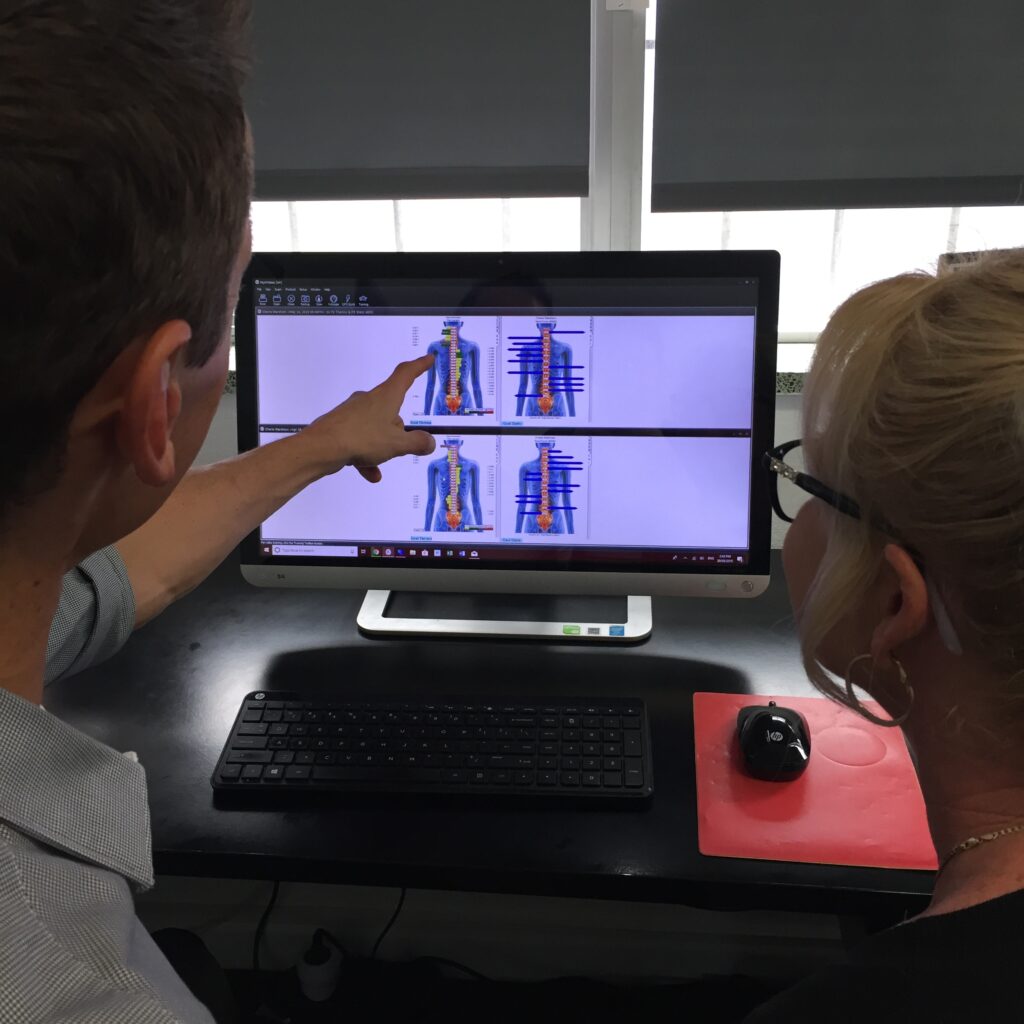Times are forever changing. As such so is life as we know it. This change is happening at such a rapid rate the very first thing we need to be able to do is to survive them. Charles Darwin was quoted that “it isn’t necessarily the fittest that survive, but the fittingest,” ie those most willing to adapt and change that are those most likely to survive.

This survival essential was further ramped home in a beautifully written book by Laurence Gonzales entitled “Deep Survival.” Throughout this book Laurence dives deep into a myriad of amazing survival stories and he also lays out his 12 rules for survival.
In Chiropractic, thankfully we aren’t faced with surviving major life threatening emergencies. But we are certainly dealing with life impacting pain and disability each and every day. We’ve put a little Chiropractic spin on Laurence Gonzales’ 12 Rules of Survival.
1. Perceive, believe (look, see, believe).
Accept the reality of your situation, whatever it is. If this is how you are feeling, how you are moving, functioning within your life, how you are sleeping or even how you are aging. Acknowledging where you are at, being real is absolutely essential. It’s only with a true assessment of where you are at can you set a course on where you want to go. From here, keep moving towards the outcome you desire. Set your sights on the goal not on the obstacles in the way.
2. Stay calm (use humour, fear to focus).

Don’t be ruled by fear. Use fear instead as the great driving force it can be. If fear is that motivator to help you take one more step towards getting better, great- use it and channel its strength.
As much as possible, can you make light of the situation? Patch Adams has showed us just how powerful laughter is. Comedian Rosanne Barr summed it up well saying, “I always laugh at myself, that way I never run out of material.” Surely, even in pain we could do with a giggle.
3. Think/analyse/plan (get organised).
Set up routines where you can exercise discipline. What do you know will help you right now? What are the small routines or tasks that you can control and that will assist you in recovery or in getting through what you need to do day in day out?
Perhaps there’s part of the PEACE & LOVE acronym for injury management you could use. Alternatively, you might just need to break down your daily tasks into one small step at a time. “The journey of a thousand miles begins with one small step,” Lao Tzu. Even if those routines are small and basic, keep on striding, one foot in front of the other.
4. Take correct, decisive action (be bold and cautious while carrying out tasks).

Whenever dealing with pain or injury don’t just wish it away. You need to take action. You need a plan, legitimate action that has a measurable and achievable outcome.
Your health professional, Chiropractor or otherwise, is a professional in this. Their combined years of study and real world experience means they’ll be great at helping you carve out your action plan. One that action or recovery plan is made stick with it.
5. Celebrate your successes (take joy in completing tasks).
Let the smallest victories bring satisfaction. From 24/7 pain to getting 4 hours of sleep a night is a big win. Just being able to walk the flight of stairs, sit comfortably or pick up the infant again these are all legit wins.
Even if you’ve imagined yourself much better than where you are right now appreciate you’ve come this far. With your eyes set on the mountain top, sometimes when climbing it’s ok to stop, reflect and see how far you’ve come.
6. Count your blessings (be grateful – you’re alive).
Gratitude is frequently cited as one of the healthiest outlooks you can maintain. We are privileged enough to have some truly inspirational people here @ Transitions Chiropractic. We have many people with chronic and acute pain who always focus on the good, but then there’s the exceptional.
In the past few months alone we’ve had 2 x triple heat bypass clients, 2 x knee replacements, 1 x breast cancer survivor whose finished chemotherapy & now wrapping up radiation therapy, another who’s prostate was removed and a brain cancer survivor. Every day above ground is a good day. That we are here is something to be grateful for.
7. Play (sing, play mind games, recite poetry, count anything, do mathematical problems in your head).
Keeping your brain engaged is always essential. After all it is the master controller for all that we feel and as such it determines a lot of our actions and sensations.
Keeping your mind busy keeps the positive wiring and chemistry firing it’s the number one thing you can do to dull the sensation of pain. People repeatedly talk about the power of prayer or affirmations, especially in a tough time. Keep reminding yourself that you can, will and must get through this and there’s a good chance you will.
8. See the beauty (remember: it’s a vision quest).

There’s magic in the moment. If you can find it and be present right here the nagging voice of pain quiets and you can have your moment of bliss. Sometimes we’ve just got to stop to see it. There can be beauty behind struggle as life slows down. Allow the beauty to enter your mind and heart and relieve the stress or tension.
If that run has to become a walk maybe you’ll be able to notice the sunset, or a blooming flower. Feeling the weight of your son while straining to carry him to bed reminds you just how much his grown. See the beauty in small wins, tiny details and the little things that are going just right.
9. Believe that you will succeed (develop a deep conviction that you’ll heal).
Stay determined and focused. Henry Ford summed it up saying, “whether you think you can, or you think you can’t – you’re right.” Coming back to the power of the mind again you must believe that you are getting better or that you will get better. Pain is temporary and it helps to remind yourself sometimes.
Often, we can let our actions talk for us. If we take that positive step then our feelings of possibility drastically increase. Lead your own belief. Take the physical steps to getting better and it’ll be easier to believe it too.
10. Surrender (let go of your fear; “put away the pain”).
Ease up a bit, release your grip and admit reality. It’s only with a clear vision of where you are right now, the pain or discomfort you are currently experiencing can you possibly map a way out. We can’t control everything and sometimes, accepting reality creates a great foundation for what is next.
There’s zero point playing the control freak or micro manager with injury. One survivor said it is “resignation without giving up.” Put another way is a great quote from the movie Van Wilder, “don’t take life too seriously, you’ll never get out alive.”
11. Do whatever is necessary (determination; will and skill).

This might take more work than first thought. However, with hard work, dedication and discipline, it’s absolutely possible to get better. For many of us the only time we make drastic life changes is when we’ve hit rock bottom. Hopefully, you don’t have to fall off the cliff and stare rock bottom in the face before recognising the need to change.
You’ve got the body and the mindset, you’ve got the tools and with the right professional expertise, Chiropractor or otherwise, you can “MacGyver” your way out of any situation and begin to move and feel better.
12. Never give up (let nothing break your spirit).

You can always take one more step. Keep moving towards your goal. Stay the course and you’ll be successful. With any recovery, it’s doubtful that everything will go 100% according to plan. Often that is life. Obstacles happen, we have to take a step back before marching forward. Regardless of the set backs or the obstacles in the road, focus on the process.
“Relentless forward progress” is essential for the body and mind. Even on the worst day, the biggest set back of pain or discomfort, trust that you will get better, it’ll just take time. After all “the road to progress is continually under construction.”

